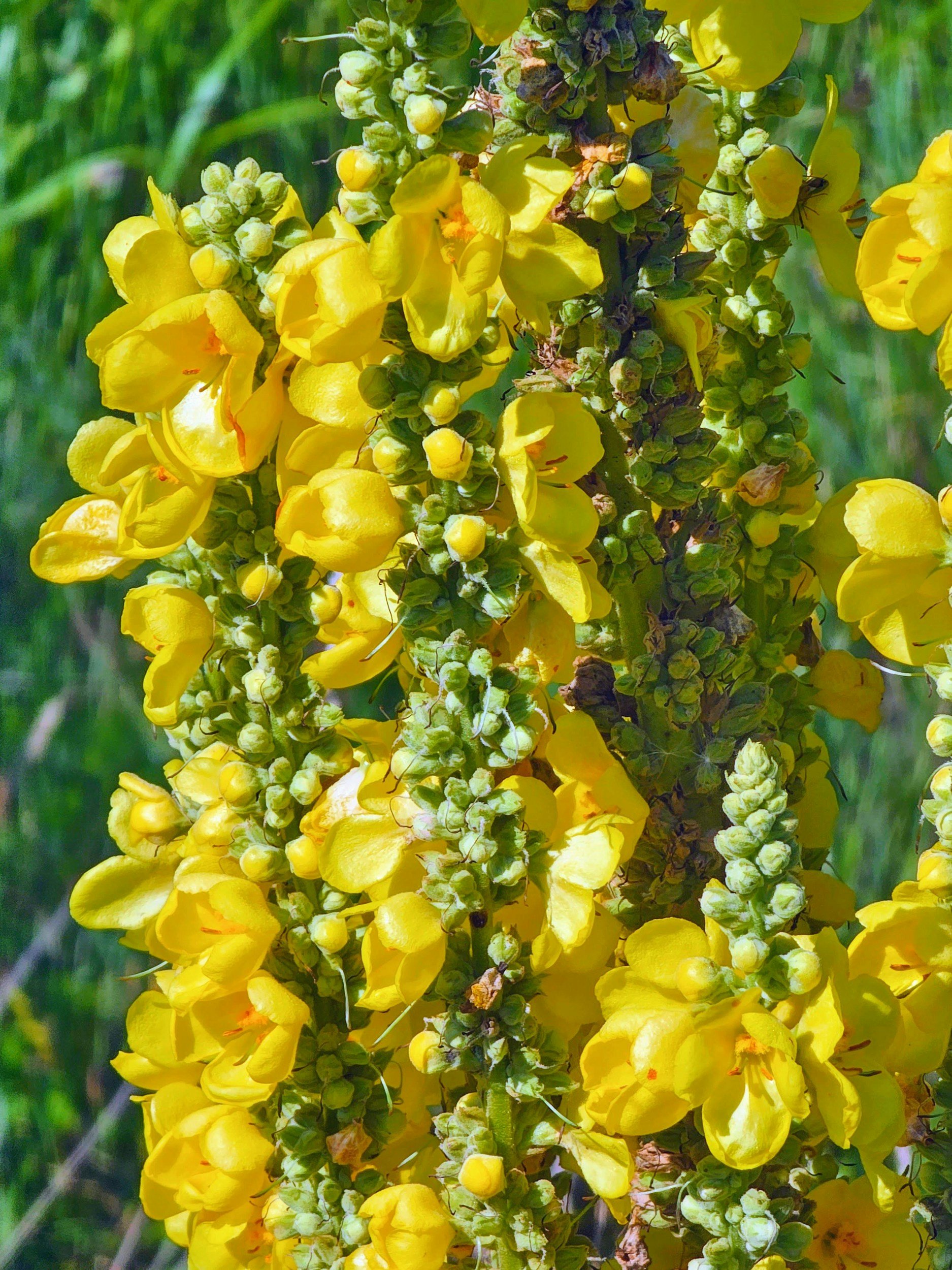
Mullein
Mullein (Verbascum thapsus)
Plant family
Scrophulariaceae
Other significant names
Great mullein,
Candlewick plant,
White mullein.
(Note: Not to be confused with black mullein (V. nigrum), which lacks the white hairs)
Parts used
Flos (Flowers)
Folia (Leaves)
Typical forms of prescription
Infusions,
Infused oil (external use)
Tinctures
Mullein (Verbascum thapsus) – Clinical Snapshot
Primary Actions
Anti-inflammatory
Expectorant
Astringent
Demulcent
Primary Indications
Upper Respiratory Tract Infections (URTI)
Coughs
Sore throats
Earache
Catarrh
Haemorrhoids
Arthritis
Painful joints
Diarrhoea
⚠️Cautions / Safety⚠️
None known
Verbascum thapsus
Phytochemistry and Pharmacology
Mucilage
Action: Demulcent, soothing, anti-inflammatory
Use: Mucilage is abundant in both the leaves and flowers, making mullein excellent for dry, irritated mucous membranes. It coats the respiratory tract, soothing dry coughs, sore throats, and inflammation, while also helping to calm digestive irritation when taken internally.
Saponins
Action: Expectorant, antimicrobial
Use: Saponins help loosen and expel mucus, making mullein useful in productive coughs or when congestion needs to be cleared from the lungs. They also have mild antimicrobial effects, adding to mullein’s value in respiratory infections.
Iridoids
Includes: Aucubin
Action: Anti-inflammatory, antimicrobial, tissue-protective
Use: Iridoids contribute to healing inflamed tissues and offer gentle immune support. Aucubin is specifically associated with wound healing and antibacterial action, reinforcing mullein’s use in both internal and topical applications.
Flavonoids
Includes: Luteolin, apigenin, hesperidin
Action: Antioxidant, anti-inflammatory, antispasmodic
Use: Flavonoids provide anti-inflammatory support to lung tissues, calm irritated nerves, and protect against oxidative stress. They also contribute to mullein’s gentle nervine action, particularly in formulas for restorative lung support.
Triterpenes
Includes: Oleanolic acid, ursolic acid
Action: Anti-inflammatory, vulnerary, antimicrobial
Use: These compounds support tissue healing and reinforce mullein’s use in topical salves for bruises, wounds, and joint pain, as well as in internal blends for chronic inflammation of the lungs or gut.
Volatile Oils (flowers)
Action: Antimicrobial, soothing
Use: The gentle aromatic oils in mullein flowers are especially useful in ear oil preparations, traditionally used to treat ear infections and inflammation in children and adults alike.
Traditional use
Mullein has long held a place in folk medicine and ritual. Its tall, torch-like flowering stalks were historically dipped in tallow or wax and burned as “hag’s tapers”, candles used in both ceremony and folklore. The plant’s name derives from barbascum, meaning “beard-like,” a nod to the soft, hairy leaves once used as makeshift insulation in footwear or lining for garments. In some traditions, the dried leaves were also used as tinder or smoked to ease respiratory discomfort.
Clinical discussion
Mullein is a key herb for the upper respiratory tract, valued for its high mucilage content, anti-inflammatory triterpene saponins, and flavonoids. These constituents make it especially effective for dry, irritated mucosa and conditions involving inflammation and congestion.
Primary actions include:
Soothing sore throats and dry coughs
Easing bronchitis and URTI inflammation
Acting as a gentle expectorant, particularly effective in hard, painful coughs where mucus is difficult to expel
Mullein is considered a specific for bronchitis, especially when the cough is dry and painful. Infusions or tinctures of the leaf are commonly used, and the herb is gentle enough for children, particularly in teas for sore throats, coughs, and diarrhoea.
The flowers, infused into oil, are used externally to treat:
Earaches and mild ear infections (especially in combination with garlic oil)
Haemorrhoids
Joint aches, bruises, and inflammatory pain
Mullein is also gently astringent and demulcent, making it useful where tissues are both inflamed and irritated.
Cultivation/harvesting
Mullein (Verbascum thapsus) is a biennial plant that thrives in poor, well-drained soil, often seen growing wild along roadsides, meadows, and disturbed ground. In its first year, it forms a large rosette of soft, fuzzy leaves; in the second year, it sends up a dramatic flowering stalk that can reach over two metres in height.
Leaves are best harvested in late spring to early summer, ideally before or during early flowering.
Choose the young, lower leaves, which are rich in mucilage and more tender.
Dry quickly in a well-ventilated area to prevent mould. Mullein’s hairs retain moisture and can be slow to dry.
Wear gloves when handling large quantities, as the fine hairs may irritate the skin or throat in sensitive individuals.
Flowers can be harvested throughout the summer as they bloom, usually in small quantities each day. These are best used fresh for oil infusions.
Mullein is self-seeding and low maintenance, making it an easy addition to wild gardens or herb patches.
Key Botanical Features of Mullein (Verbascum thapsus)
Growth
Type: Biennial herb.
Size: Grows 1–2.5 meters (3–8 feet) tall in its second year.
Stem: Erect, unbranched, thick, and covered in fine woolly hairs.
Leaves
Type: Simple, alternate.
Shape: Lanceolate to oblong, with a broad base tapering to a pointed tip.
Size: 10–50 cm (4–20 inches) long.
Margins: Entire or slightly wavy.
Texture: Soft, densely covered in fine, silvery hairs, giving a velvety or woolly appearance.
Colour: Grey-green.
Basal Rosette: It forms a large rosette of basal leaves, 30–60 cm (12–24 inches) across in its first year.
Flowers
Type: Small, five-petaled, saucer-shaped flowers, arranged densely along a tall, central spike.
Size: 1.5–3 cm (0.5–1 inch) in diameter.
Colour: Bright yellow.
Flower Arrangement: Found in dense terminal spikes, which can reach 30–60 cm (12–24 inches) long.
Blooming Period: Mid to late summer (June–September).
Pollination: Bees and other insects are also capable of self-pollination.
Fruits & Seeds
Fruit Type: Small, oval capsule, splitting open when mature.
Size: 5–10 mm (0.2–0.4 inches) long.
Seeds: Tiny, brown, and numerous (each plant can produce over 100,000 seeds).
Dispersal: Mainly by wind and soil disturbance, seeds can remain viable for decades.
Roots
Type: Strong taproot.
Function: The plant can survive in poor soils and drought conditions.
Habitat & Growth Conditions
Climate: Prefers temperate climates, but can tolerate various conditions.
Soil: Thrives in dry, sandy, or rocky soils, but also grows in nutrient-poor and disturbed areas.
Sunlight: Prefers full sun.
Water Requirements: Drought-tolerant, requires little moisture once established.
Distribution: Native to Europe, North Africa, and Asia.
Sustainability/conservation
Least concern.
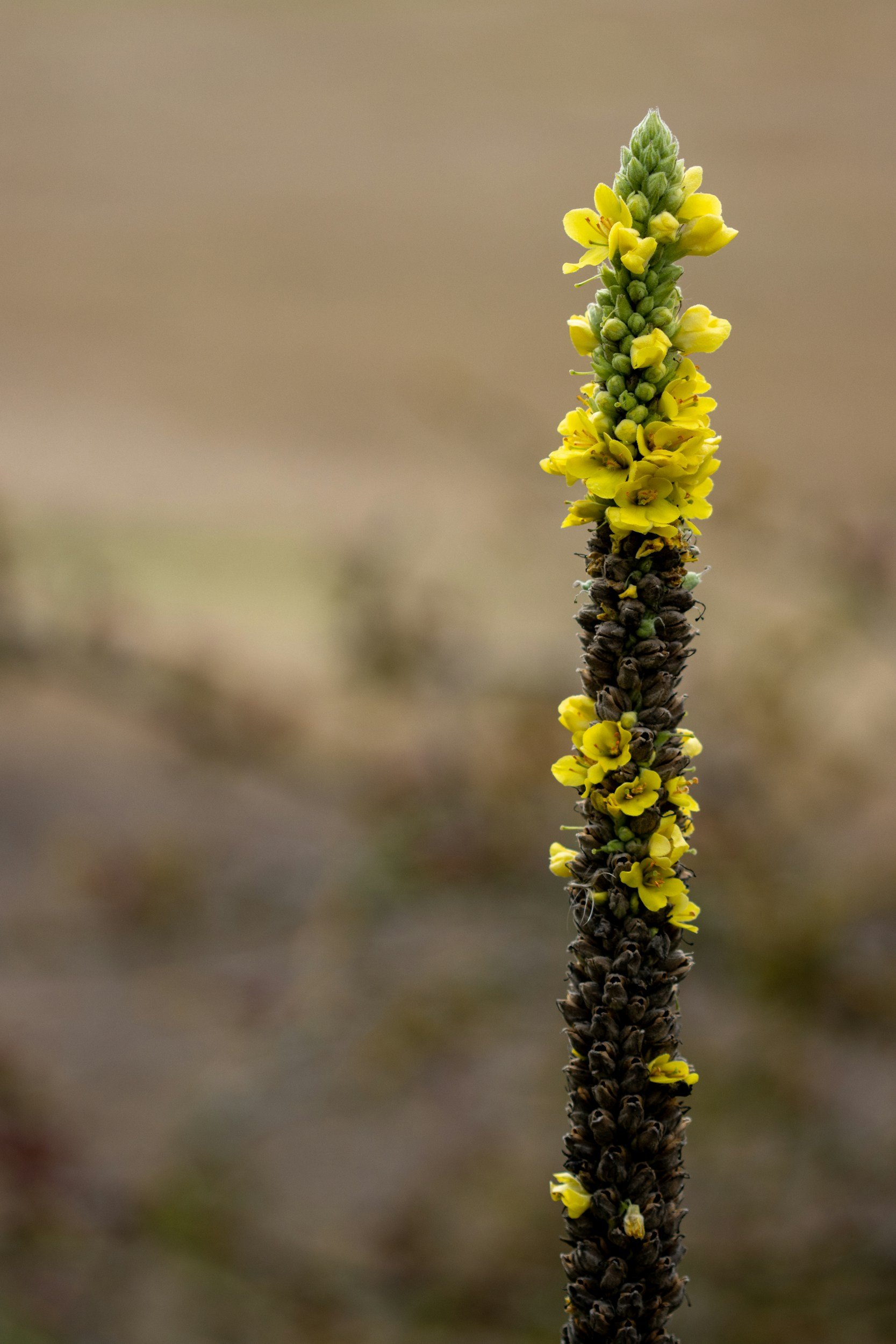

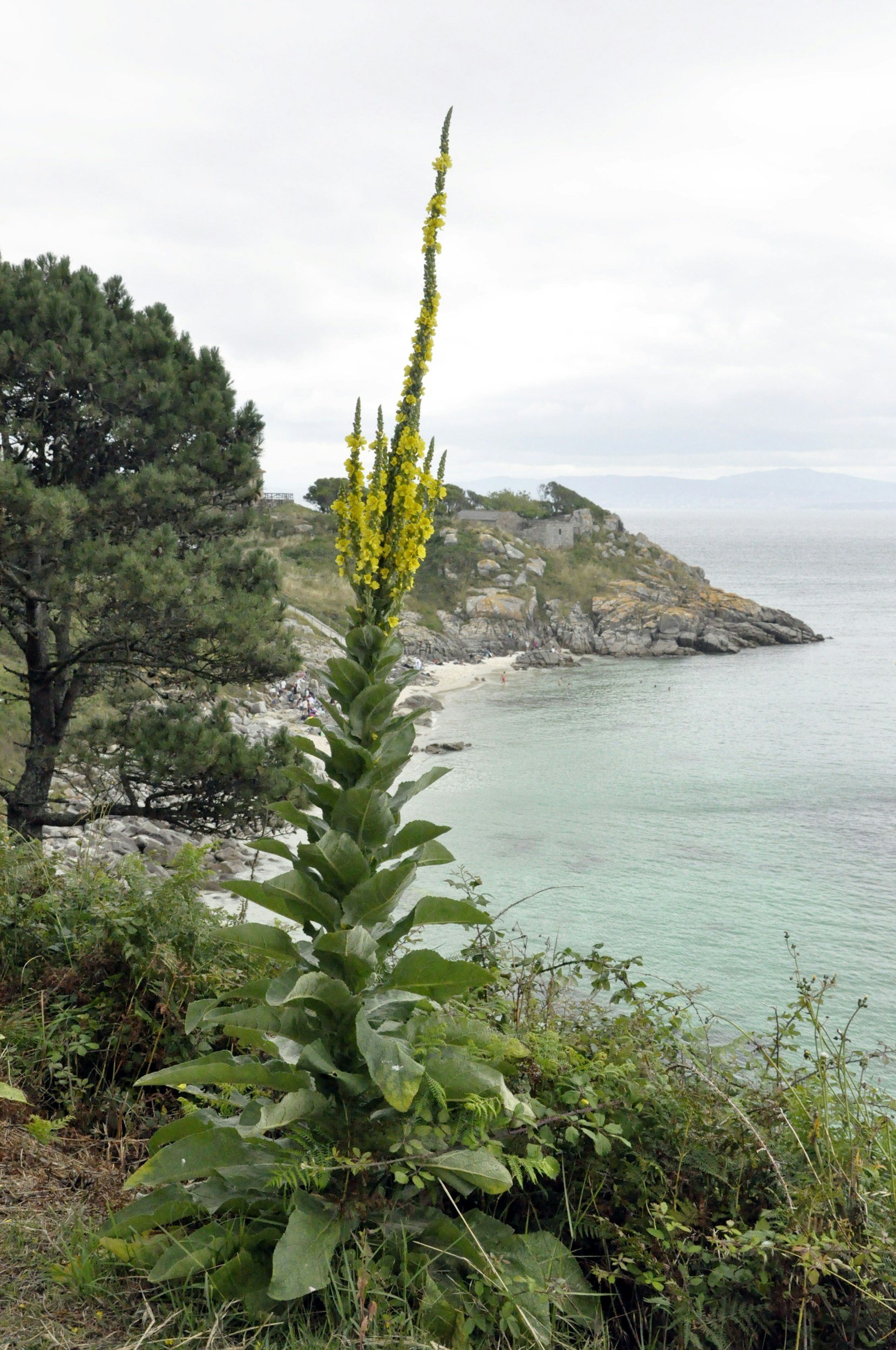
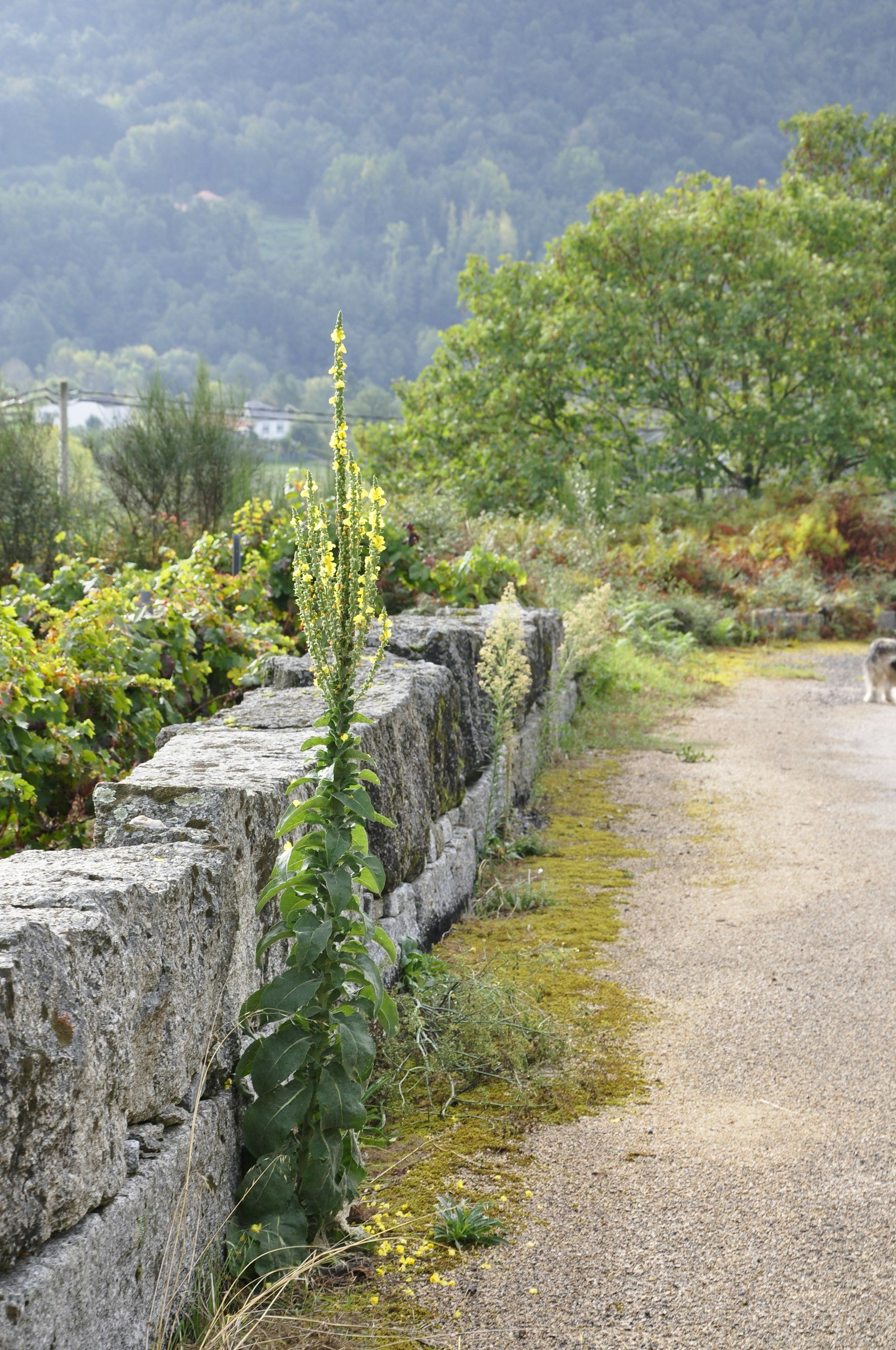
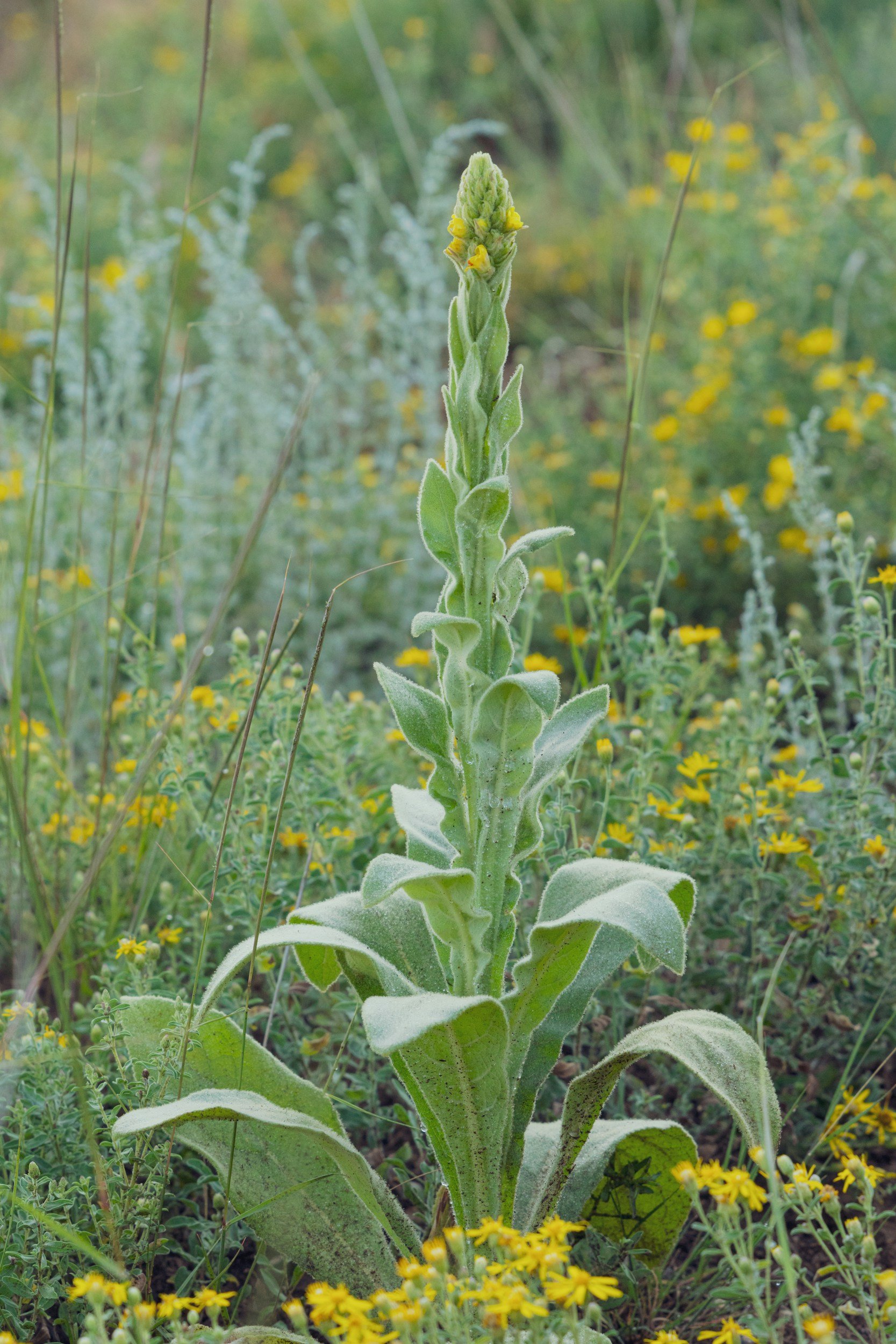
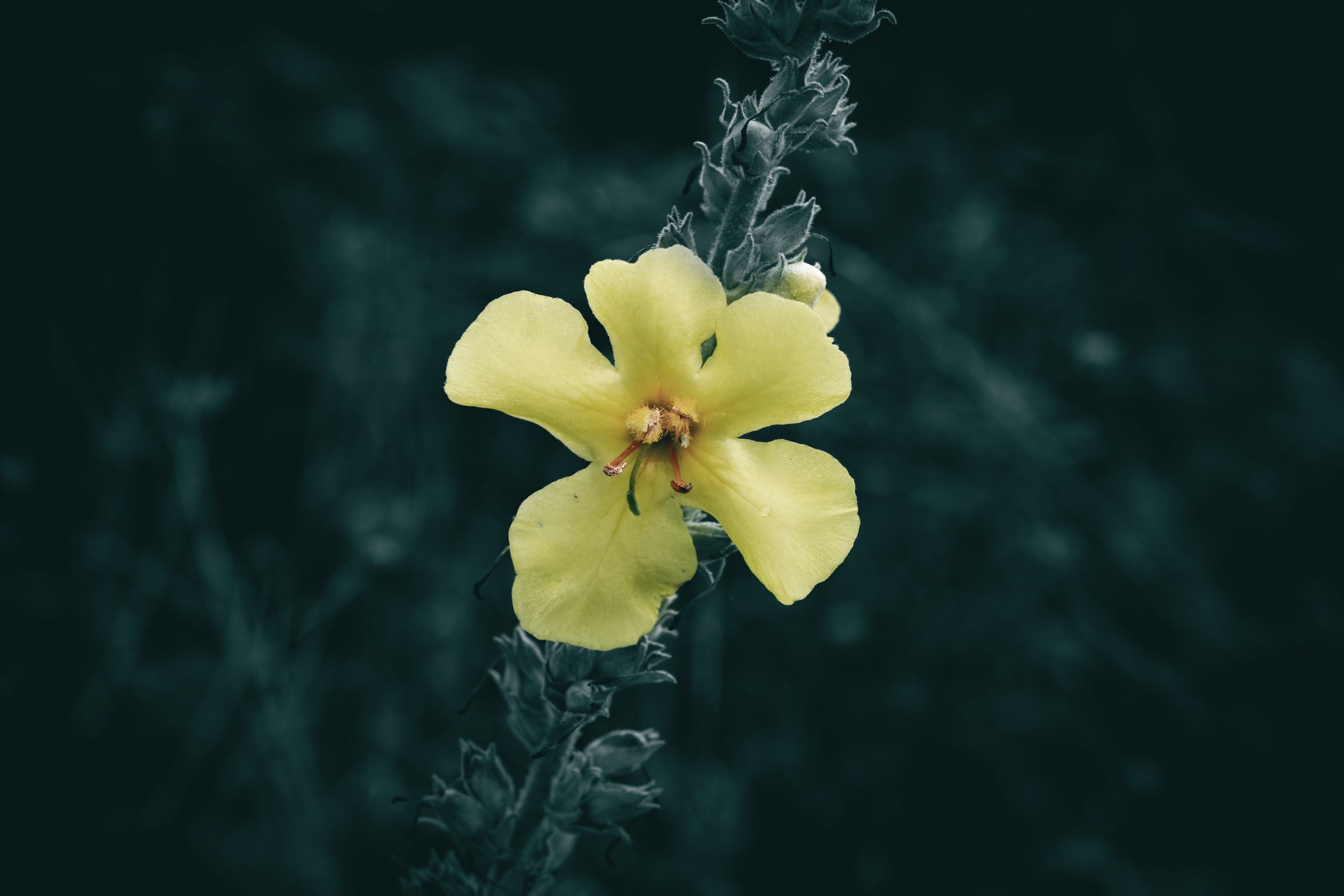
Sources
Bartram, T. (1998). Bartram’s Encyclopedia of Herbal Medicine. Constable.
Fisher, C. (2009). Materia Medica of Western Herbs, (2018 edition). Finchley Road, London. Aeon Books.
Hedley, C & Shaw, N. (2020). A herbal book of making and taking. Finchley Road, London. Aeon Books.
Hoffmann, D. (2003). Medical Herbalism: The Science and Practice of Herbal Medicine. Healing Arts Press.
McIntyre, A. (2019). The complete herbal tutor, revised and expanded edition. Finchley Road, London. Aeon Books.
Plants of the World Online | Kew Science. (n.d.). Plants of the World Online. https://powo.science.kew.org/
Disclaimer: This page is for educational purposes only. Consult a qualified medical herbalist before using herbs, especially during pregnancy, when trying to conceive, while breastfeeding, for medical conditions, or with children.
Read the full disclaimer → Medical Disclaimer.





